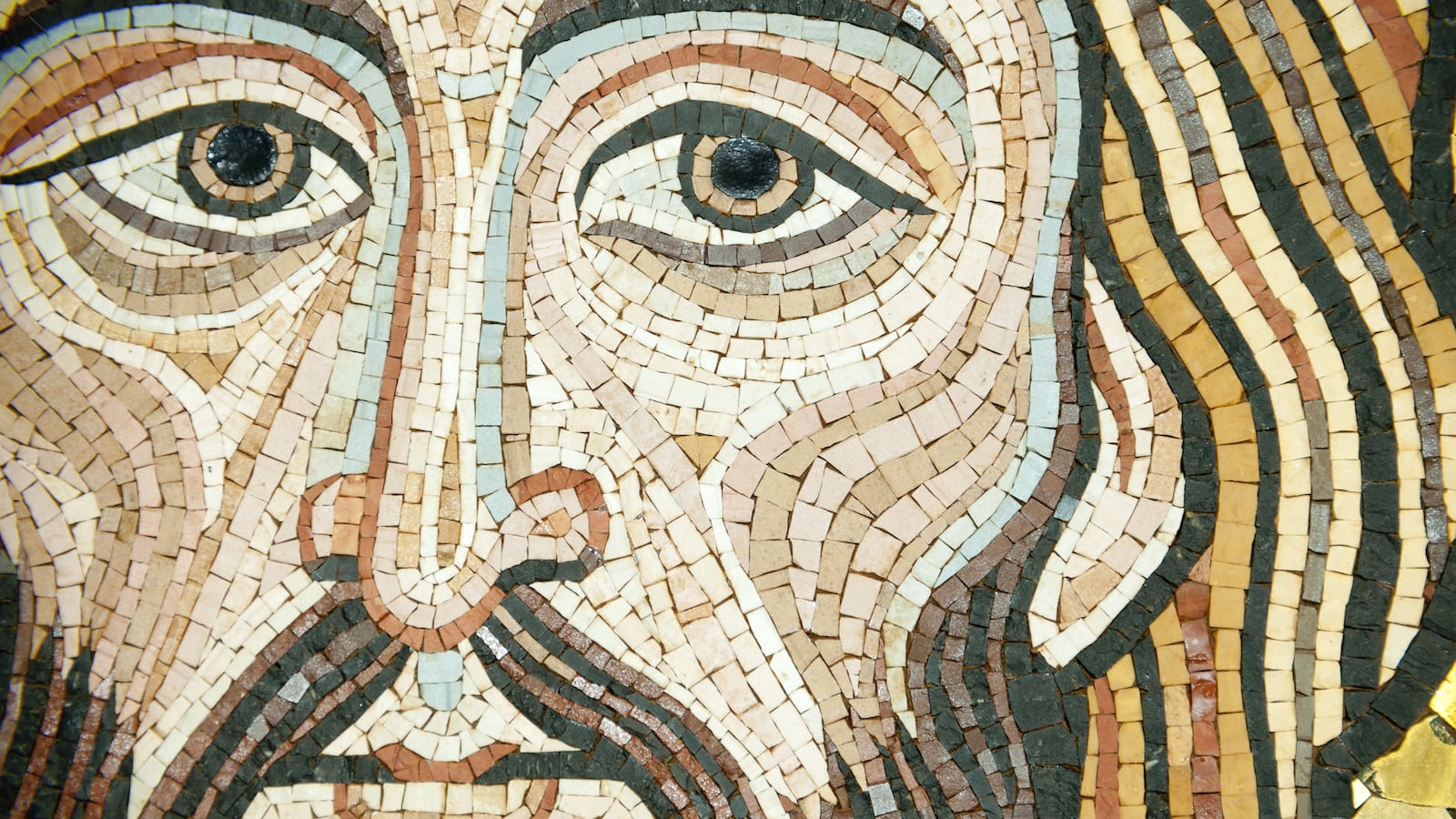A new book claims that a lost manuscript proves that Jesus was married to the prostitute Mary Magdalene and had two children. “I swear I’ve read this story,” you say, checking the date on this article. And indeed you have. The Jesus-was-married theory made famous by and forever associated with Dan Brown’s Da Vinci Code has resurfaced in scholarly garb numerous times in the past 10 years. And each time a media firestorm ensues. Mary Magdalene, we just can’t quit you.
In The Lost Gospel, written by documentarian Simcha Jacobovici and York University Professor Barrie Wilson, the authors claim they bring new evidence to bear on this question. They have translated a 1,450-year-old manuscript written in Syriac and housed in the British Library that they say proves Jesus had a wife, children, and close ties to the Roman authorities. They believe the manuscript is a Syriac translation of an earlier Greek text that may have been written by one of Jesus’s closest followers. In their own words, it “tells a story that pre-dates the four Gospels of the Christian canon. It’s a Gospel before the Gospels.”
The book has already been announced on Jacobovici’s website and in interviews with the media, but the official launch and big reveals will come in a high-profile press conference to be held at the British Library in London on Wednesday, November 12.
In the meantime, much of the book is already available online, and scholarly criticism has already started to trickle in. If it seems unfair to criticize a book that isn’t out yet, bear in mind that the “lost Gospel” on which the book is based isn’t actually lost.
The manuscript is attributed to the Christian writer Zacharias Rhetor and, according to Jacobovici and Wilson, it preserves the untold love story between Jesus and Mary and the shocking revelation that they had two children.
Not mentioned: whether Jesus took out the trash or Mary Magdalene stopped making an effort after the second kid was born and Jesus started spending all his time with his guy friends.
We, of course, hear nothing about Jesus’s offspring in the Bible. There’s a line of rice farmers in Japan who claim to be direct descendants of Jesus (irony alert: they’re Buddhists). And there are at least 40 million copies of a book claiming that Jesus’s great-to-the-power-of-n-granddaughter is a cryptographer in Paris. But other than that, we know nothing about this line of potential demigods. Perhaps they turned out to be deadbeats. It’s a tough act to follow, and not everyone wants to go into the family business. Maybe Grandpa spoiled them. Maybe Jesus—who refuses to acknowledge his mother and brothers as real family in Mark 3—wasn’t going to take responsibility without a DNA test and Maury Povich-style reveal. We can only assume that they’re great at feeding the masses at Thanksgiving and can ice-skate outside year ’round, even in California.
There’s just one small problem with the Jacobovici-Wilson theory. Jesus and Mary are nowhere in the manuscript. It’s one version of a well-known ancient novel called Joseph and Aseneth, which discusses the life and times of the biblical patriarch Joseph (of technicolor-dreamcoat fame) and his relationship with Aseneth, the Egyptian woman he marries in Genesis 41:45.
Not to be a killjoy fact-checker, but this does seem like an important detail to get right.
Jacobovici and Wilson argue that the use of the names Joseph and Aseneth is a smokescreen. Swap out the names and you get the real story of how Jesus fathered two children when no one was looking.
It’s very creative, but Joseph and Aseneth aren’t mysterious names that need decoding; they’re biblical characters. Expanding on biblical details and creating backstories and sequels to biblical episodes was common practice in the ancient world. Literary expansions of the biblical stories of Enoch, Abraham, Moses, et alia were a common part of the literary landscape of the ancient religious world, and Joseph and Aseneth is another example of this.
The fact that there are Christian elements in the text does not prove that the original version of Joseph and Aseneth was Christian, much less that it was a story about Christ. There are plenty of examples of Christians editing Jewish apocryphal traditions for their own communities. At least half of an apocryphal story known as the Ascension of Isaiah can be attributed to Christian editors. Christians like the heroes of the Hebrew Bible, too; we’ve been grabby since the beginning.
Granted, allegory was also a commonplace literary device in the ancient world, and there were readers who wondered if Joseph and Aseneth was this kind of story. As the authors point out, the person who commissioned the Syriac translation wrote to the translator, Moses of Ingila, to ask whether the novel was just a love story. His response seems to suggest that Joseph and Aseneth is a philosophical allegory in which Joseph stands for transcendental reason and Aseneth is the human soul.
But that’s a different kind of thing. There are many kinds of allegories in the ancient world, but it would be unusual for people to be stand-ins for other people. For example, the beasts of Revelation are symbols for Roman emperors, and the lovers of the Song of Songs are (depending on your religious background) symbols of either God and Israel or God and the church. The idea that Joseph and Aseneth are secret names for Jesus and Mary isn’t allegory, it’s code.
What Jacobovici and Wilson have offered is a pseudo-allegorical interpretation of a sixth-century Syriac translation of a Greek text about the biblical Joseph. The book is imaginative and informed by a quasi-religious devotion to the idea that Jesus was married, but it isn’t historically accurate. They have no real arguments to support their claim that Joseph and Aseneth was written in the first century by someone close to Jesus, and they never really engage any arguments to the contrary. As Mark Goodacre, Robert Cargill, and Greg Carey have observed, none of the other texts that mention Jesus’s special relationship with Mary Magdalene can be dated to the time of Jesus himself.
This isn’t Jacobovici or the greater public’s first ride on the Jesus-was-married carousel, but it is the first time that Joseph and Aseneth has entered the discussion. It’s worth asking: Is this kind of sensationalism beneficial to the study of ancient religious literature? Certainly the British Library received media attention for its collection of priceless manuscripts. And, as a result, an interesting and important text has burst out of the archives and into public consciousness. But at what cost? Anyone who reads Joseph and Aseneth hoping for some hot deity-on-prostitute lovin’ is going to be disappointed. Will it be harder to communicate the value of ancient apocrypha when the bar for public interest is set at “Jesus Christ is my baby daddy”?






